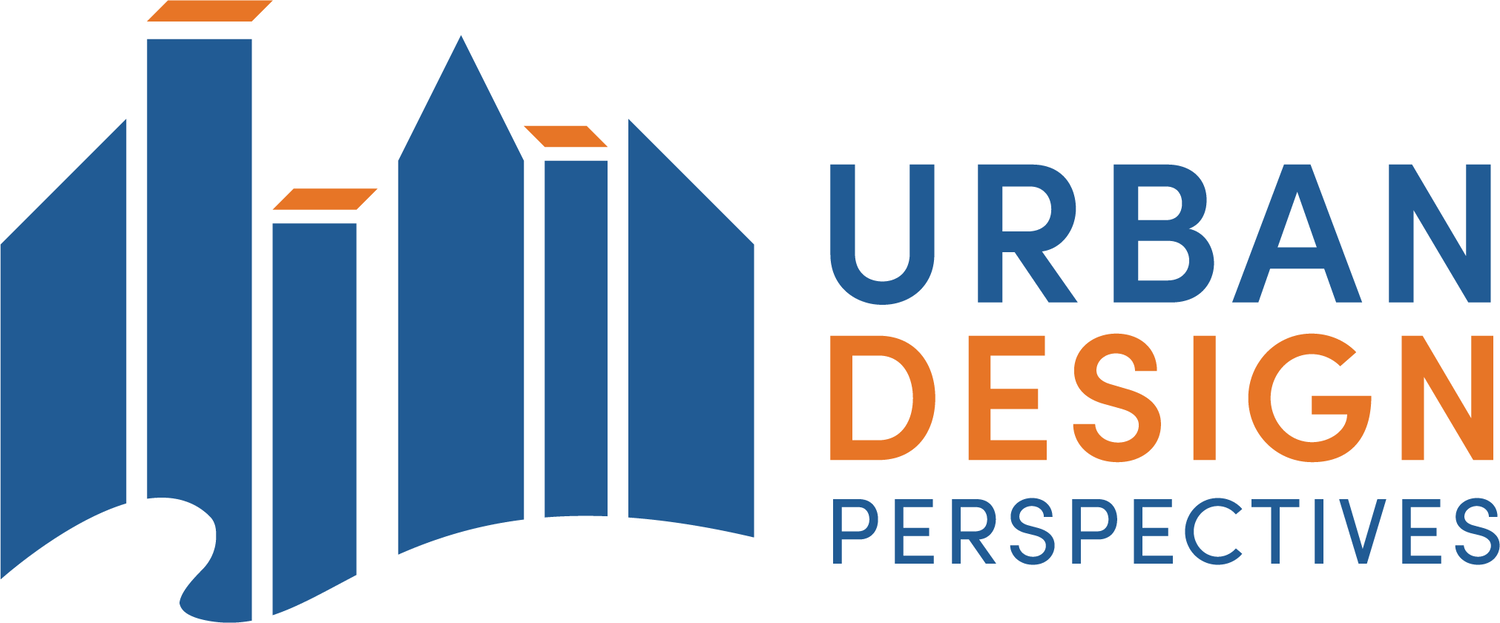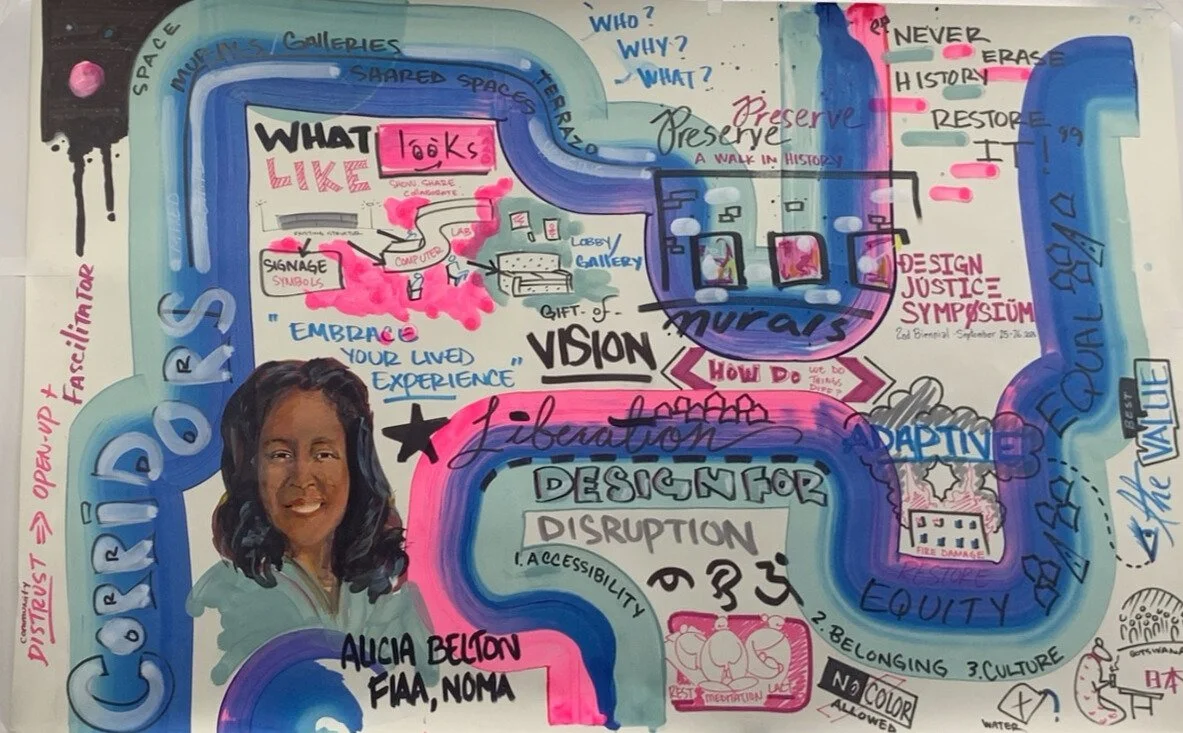Justice of Designed Space
Graphic Recording by Jendayi Berry
I recently had the opportunity to keynote at this year’s Design Justice Symposium at the University of Minnesota. The Design Justice Symposium centers anti-racism, racial and social justice, equity, environmental justice, disability justice, and/or other forms of justice that work toward countering systemic oppression in design education and practice. The symposium creates space to engage in work that is necessary in disrupting and dismantling oppressive design through educational and workshop opportunities. This year's theme, Designing for Disruption, uplifts ways to use design to disrupt the status quo and normative or colonial design processes within artifacts and space.
Sharing on the topic of the Justice of Designed Space was deeply personal for me. As a bi-racial woman from the south in a profession that is evolving in its representation of women and people of color, my lived experiences have shaped my approach to designing spaces that “Do Justice”. It centers accessibility, belonging and culture of community because those are the tangible aspects of how equity can be reflected in the built environment.
We often think of accessibility in terms of physical structure like being able to get into and through a space for those in wheelchairs, but it is so much broader in its expression. From neurological and audio-visual perspectives, the adaptation of form and function are critically important for all to belong. And speaking of belonging, we all know when we don’t feel welcomed in a space. It’s not that long ago when Jim Crow era signage designated who could and could not sit, drink or eat in places where we learned, recreated and shopped. As our communities and cultural norms have changed, we have included spaces for nursing mothers, religious practices like foot washing and all gender restrooms. Although many of these changes in the built environment were legislated, it is how disrupting the status quo benefits all.
I often share how buildings can be used as tools of service. My hope for future design disrupters is to critically think from the “other” perspective. How can the design of justice of space bring light and liberation?
Lights are used to make things evident.
Lights are used to guide.
Lights are used as a warning.
Lights are used to bring cheer.
Lights are used to make things safe.
Our design profession can be that light that brings people together in spaces that bring wellbeing for all.
“A community that excludes even one member is no community at all”. Sevenly.org

